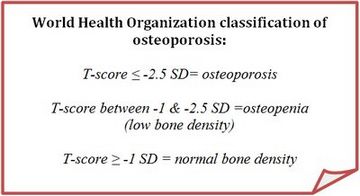About BMD testing Copy
Who should have a BMD test?
- All women and men 65 years or older
- Postmenopausal women and men 50 – 64 with risk factors for fracture including:
- Fragility fracture after age 40
- Vertebral fracture or low bone mass identified on x-ray
- Parental hip fracture
- High alcohol intake
- Current smoking
- Low body weight, i.e. less than 132 lbs or 60 kg
- Weight loss since age 25 greater than 10%
- High risk medication use: prolonged glucocorticoid use, aromatase inhibitors for breast cancer, androgen deprivation therapy for prostate cancer
- Rheumatoid arthritis
- Other disorders that may contribute to bone loss
- Younger men or women (under 50) with a disease or condition associated with low bone mass or bone loss:
- Fragility fractures
- High-risk medication use (steroid use, aromatase inhibitors, androgen deprivation therapy)
- Rheumatoid arthritis
- Other chronic inflammatory conditions
- Cushing’s disease
- Malabsorption syndrome
- Uncontrolled hyperthyroidism
- Primary hyperparathyroidism
- Hypogonadism; Early menopause (< 45)
- Other disorders associated with rapid bone loss/fractures
What exactly happens during a bone mineral density test?
The most common bone density test in use today is called dual energy x-ray absorptiometry (DXA). This test involves lying on a table for several minutes while a small x-ray detector scans the spine, one hip, or both. The amount of light (x-ray) that passes through the bone is measured, thus indicating how dense (thick or thin) the bones are. The test is safe and painless and does not require any injections or any other discomfort. A very small amount of radiation from a DXA test is transmitted.
How test results are read
The patient’s bone density is compared to the bone density of an average young adult.
A T-score is calculated that describes the density of the bones (usually at the spine and hip) compared to this average.
The T-score is expressed in units, “standard deviations (SDs),” indicating how far the score deviates from what is considered normal for a young adult.
Below normal is always indicated with a minus (-) sign.

It should be noted that BMD test results and the WHO classifications are only part of the picture in determining risk for fracture.